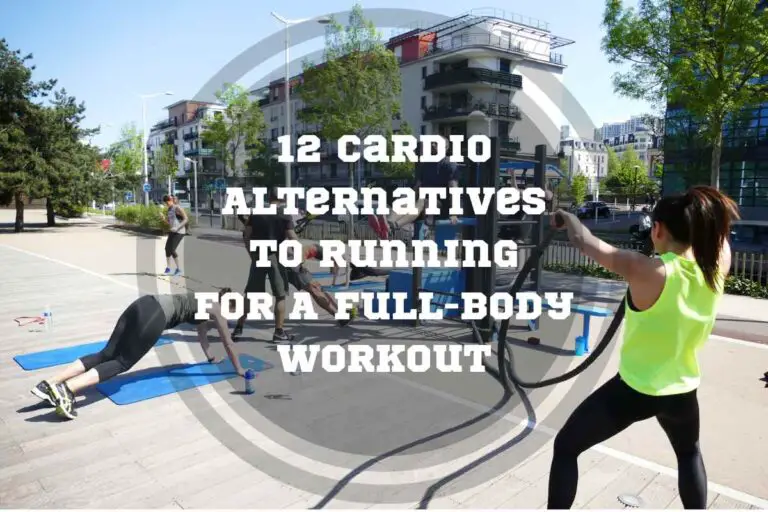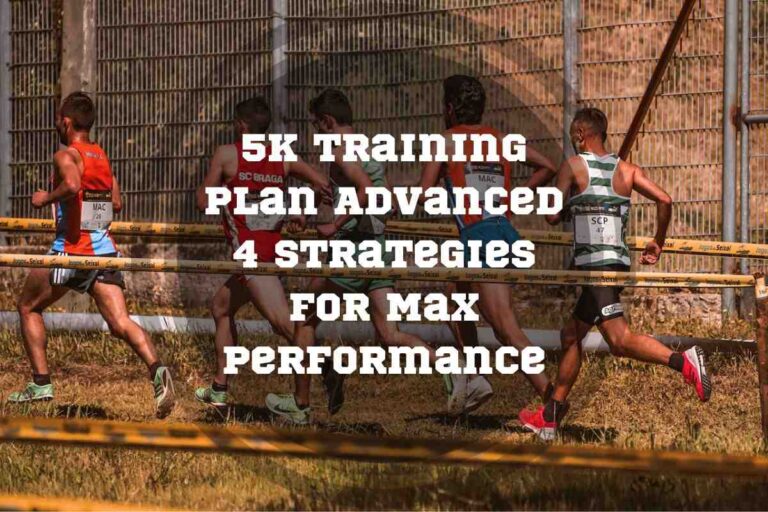Does Running Tone Your Body? Running Secrets Revealed
Do you want to transform your body with running? Running is one of the most popular activities for people looking to improve their physique and health. In fact, it’s estimated that 50 million Americans run on a regular basis. But does running tone your body?
This article will discuss how running impacts your body, the potential benefits and risks, and tips on how to get started if you’re considering adding running to your routine.
Let’s dive in!
How Does Running Change Your Body?
Does running tone your body? Yes, running benefits body shape, building almost every major muscle group, including the glutes, hamstrings, calves, and core. It helps build strong bones and improves agility to prevent injury, while also reducing fat.

What Does Running Do for Your Body?
Running is considered a total-body workout, meaning it helps strengthen the legs, core, and upper body, all at once. When you run regularly, you’ll notice improved oxygen intake and increased circulation throughout the entire body.
But does running grow your glutes? Actually, running can result in stronger muscles in your glutes, legs, hips, and abs, as well as improved bone density, which increases overall health. Additionally, running has been linked to better cardiovascular health and maintaining a healthy weight.
When it comes to body transformation, there can be major differences in the way men and women get toned when running. Women may experience better toning of their thighs and calf muscles. On the other hand, men’s bodies tend to become more toned all over.

Pro Tip:
Strength training should typically complement a runner’s exercise program. It contributes towards improved tone within specific areas, leading to benefits for overall health and physiology, regardless of gender or age.

Pro Tip:
Strength training should typically complement a runner’s exercise program. It contributes towards improved tone within specific areas, leading to benefits for overall health and physiology, regardless of gender or age.
Running Benefits for Men’s Muscles
Running can help men get into shape and improve their muscular tone. The large muscle groups of the glutes, hamstrings, and quads are particularly targeted when running, as they go through a full range of motion while running.
Does running tone your arms? Male runners also tend to see toning in the upper body when running, primarily due to the larger fiber tissues present in their bodies. Core strength is another benefit of running for men, due to the increased engagement of the abdominal muscles during a run, along with improved hip movement.
Running Benefits for Women’s Muscles
Running utilizes almost every muscle group, and tones and strengthens specific areas. Women that run regularly experience toned legs, buttocks, abs, and arms, since these are all muscles recruited during running.
In particular, transformation in a female runner’s body often involves toned calves and strong bones.
Benefits of Running for Your Body
Running is a great way to boost energy, reduce fat, strengthen muscles, and improve overall health. Learn more to find out how running can transform your body!
1. Stronger Bones
Running is an excellent way to support strong bones. Exercise helps to slow the deterioration of bone and can even create new, stronger bone material. Weight-bearing activities like running are especially important for promoting greater density in your skeletal system.
The impact of each stride generates physical stress on the bones, which leads them to adapt by becoming bigger and stronger. Additionally, long-distance running stimulates the production of hormones such as growth hormone and IGF-1, which help maintain low levels of calcium loss through improved metabolic processes.
2. Strengthened Muscles
What muscles does running tone? Running is an intense form of exercise that can have numerous benefits for the muscles, mostly in the lower body and core. When running, all major muscle groups are engaged, including the legs, glutes, hamstrings, and calves, as well as core muscles such as the abdominals and obliques.
In addition to strengthening these large muscle groups in the legs, running also increases muscular endurance, helping the muscles work longer without fatigue so you can achieve your fitness goals faster.
3. Maintaining Healthy Weight
Does running slim legs and tone your belly? Yes! Running is one of the most effective ways to slim legs and maintain a healthy weight. It is an excellent form of cardiovascular exercise and helps burn calories quickly, making it perfect for those looking to lose or maintain their weight.
Running boosts the metabolism, helping you to create an optimal environment in your body for burning fat and calories. Thanks to its intense nature, running can help improve heart rate and oxygenate the whole body, contributing significantly toward overall fitness.
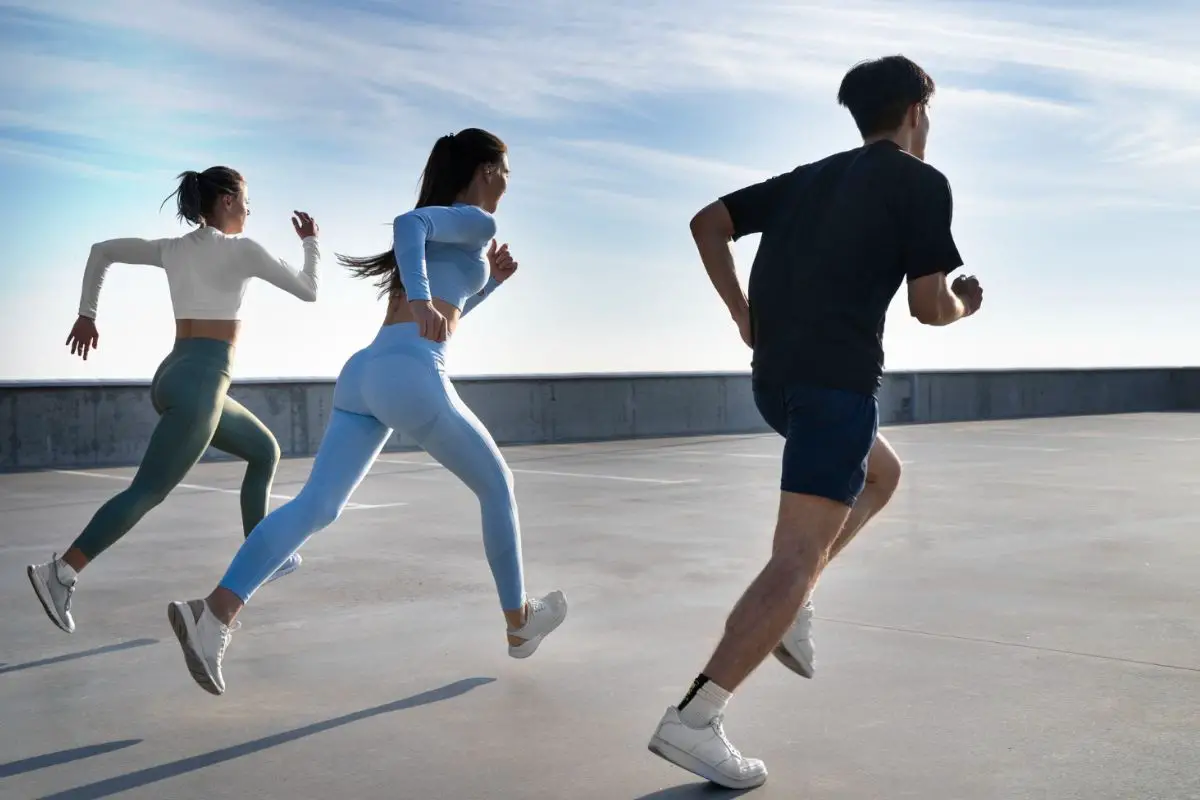
4. Improved Cardiovascular Health
Regular running helps improve cardiovascular health by increasing your heart rate and pumping more blood and oxygen to the working muscles. A stronger and healthier heart can lead to improved lung function, increased blood circulation, reduced cardiovascular mortality, and a reduced risk of developing coronary heart disease.
Running also improves oxygenation of the blood, which increases your endurance levels while decreasing the risks of high blood pressure and diabetes.
5. Better Sleep
Running has been found to help regulate proper sleep patterns through greater muscle endurance and recovery capabilities from an improved cardiovascular system.

Pro Tip:
Sleep affects concentration, mood, alertness, and focus, which can have an impact on your fitness. That is why getting enough sleep should be at the top of the list for any runner who wants to improve their performance.

Pro Tip:
Sleep affects concentration, mood, alertness, and focus, which can have an impact on your fitness. That is why getting enough sleep should be at the top of the list for any runner who wants to improve their performance.
6. Boosted Immunity
Running is an excellent form of physical exercise that can help improve the body in several ways. One key benefit of running is its ability to boost your immune system and reduce inflammation in the body.
A strong immune system helps protect you from viruses, bacteria, and other pathogens. Research has shown that regular physical exercise, such as running, can favor an anti-inflammatory status in the immune system, which helps it fight off infection more effectively.
Subscribe to Our Running Newsletter!
Get free running tips from renowned professional athletes and discounts from top-notch brands.
7. Better Mental Health
Regular physical activity, such as running, can have a large impact on your sense of self-worth and overall emotional well-being. Running enables people to enjoy the feeling of improved body fitness, increased confidence in their bodies, and a better mood, all of which improve their self-esteem.
In addition, regular running can be a great way to decrease the risk of developing depression, as it has various mental health benefits that equate to improved mood and happiness. Regular physical activity, such as running, can reduce feelings of stress, anger, and aggression, and help people gain control over their emotions.
Regular running can have a tremendous effect on cognitive functions, such as memory and learning. Studies show that running at a moderate or vigorous pace increases the quantity and quality of gray matter in the brain, leading to improved mental agility, concentration levels, and greater accuracy when performing cognitive tasks.
How Does the Body Transformation of Female and Male Runners Take Place?
The body composition and muscular structure of female and male runners change as they increase in strength, endurance, and physical fitness from running. Let’s discuss this in greater detail.
1. What Happens to the Muscles at the Start of a Run?
At the start of a run, each muscle group in your body plays an important role. Your legs are essential for providing weight-bearing support and stability as you start moving, while your core muscles activate to keep your upper body upright and stable as you begin progressing forward.
The quadriceps, hamstrings, calves, and glutes all work together to provide propulsion when running. At the same time, the deep abdominal muscles provide strength and power to keep the torso upright during movement.
Finally, your upper body helps with balance and overall stability. The shoulders are engaged yet relaxed, while the arms help to rhythmically power you forward.
2. What Happens to the Muscles While Running?
When running, the muscles of your legs work together to provide propulsion and lift, with your calf muscles providing most of the power. Glutes, quads, hip flexors, and hamstrings also generate energy when you run.
The abdominal muscles are also engaged while running. When it comes to how abs change in a runner’s body, female runners experience a higher increase in core muscle activation during outdoor runs when compared to indoor treadmill jogging.
As well as engaging the legs and abs, which will help tone your body throughout your run, the upper body is strengthened while running hills or doing intervals.
3. What Happens to the Muscles After Running?
Many people wonder, does running help your butt? After running, the muscles in the lower body, such as the quadriceps, hamstrings, calves, and glutes, are toned and worked out, which further helps in building strength. These muscle groups see increased growth when running regularly for extended periods of time.
Both female and male runners also benefit from improved metabolism, as the body continues to burn calories for several hours after a run. Weight maintenance can be achieved with a combination of diet and regular exercise, since it burns off body fat and increases the number of calories burned in the post-run period.
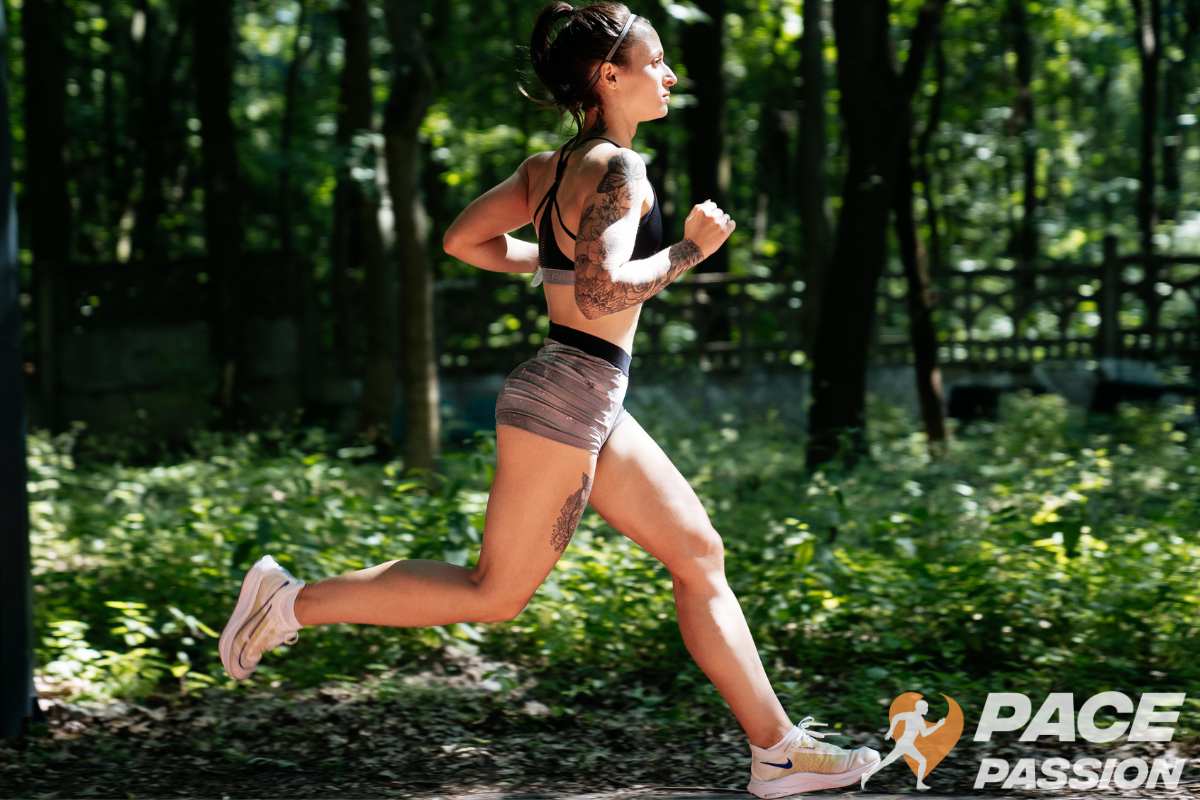
Does Running Have a Bad Effect on the Runner’s Body?
While running is an efficient and effective way to lose weight and improve cardiovascular health, it is important not to push yourself too far. Running can result in unwanted physical stress or injury if done incorrectly or excessively.
Runners who ignore rest and recovery may experience muscle fatigue from overuse injuries, joint stress, reduced muscle mass, metabolic stress, and immune system suppression, all of which have adverse effects on the body.
High-intensity sprints are great for building muscle, but any exercise that pushes beyond your ability will put unnecessary strain on the body, leading to long-term effects such as chronic inflammation or injury. Likewise, long-distance running can quickly become dangerous if taken too far without proper rest days mixed in.
Why You Should Start Running?
Running has been a popular form of exercise for centuries and can benefit your body in numerous ways. It can help strengthen bones, build muscles, aid in weight loss, and improve cardiovascular health by increasing oxygen intake and circulation. It also can reduce risk of cancer and Alzheimer’s disease, as well as boost immunity and sleep quality.
In addition to the long list of physical benefits running offers, there are many psychological advantages associated with regular running. It brings enhanced self-esteem due to improved appearance, as well as improved mood from higher endorphin levels, both of which help provide a sense of accomplishment after each run.
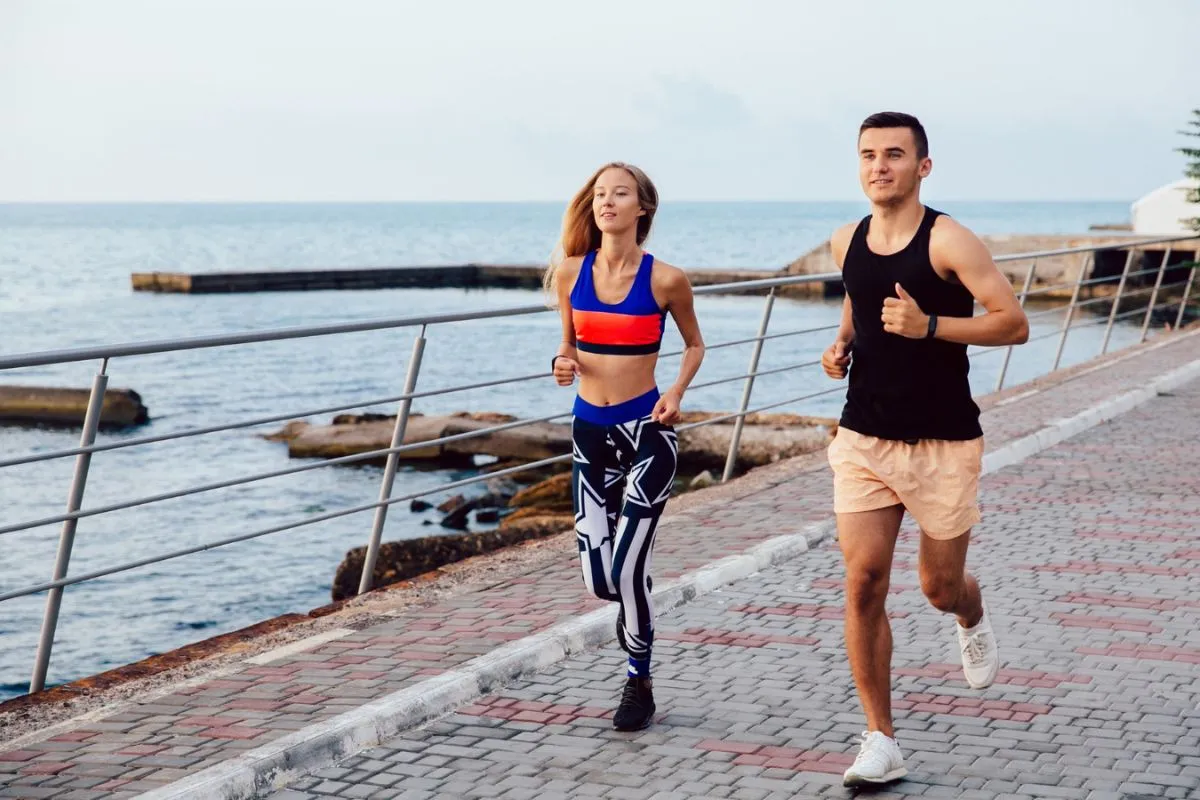
Frequently Asked Questions About Runners’ Physique
Can You Get a Toned Stomach by Running?
Running is an excellent way to achieve a toned stomach. This form of exercise can target and work the abdominal muscles, leading to increased definition over time. Speed sessions are particularly effective in strengthening the core, as they typically involve bursts of higher intensity.
How Long Does It Take to Get Toned from Running?
While the exact amount of time it takes to start seeing results may vary from one person to another, it will typically take about 4 weeks before improvements in muscle tone begin to show.
What Is the Difference Between a Runner’s Body vs. Gym Body?
A runner’s body is often much leaner than a traditional gym body, with greater emphasis on muscular endurance and cardiovascular power. While running works out every muscle in the body, it tends to primarily target the muscles in the legs, such as quads, hamstrings, inner thighs, calves, hips, and glutes.
Final Thoughts – Does Running Tone Your Body?
Running can definitely tone your body. It is an exercise that works multiple muscle groups and can promote long-term fat loss and muscle toning. It also helps improve overall cardiovascular health, boosts immunity, strengthens bones, increases self-esteem, and improves cognitive function.
When done regularly over time, in combination with other physical activities, running can impact both male and female physiques. It can transform legs (calves and things) and core muscles, and strengthen quads, hamstrings, hip flexors, glutes, inner thighs, and even the shoulders.
Be sure to take rest days and follow a healthy recovery plan while toning your body with regular runs!
Have you noticed any positive changes in your body shape with running? Please share your results in the comments below.
Also Read:
- Do Your Ankles Hurt When You Run
- What Are the Advantages and Disadvantages of Fartlek
- Why Does Running Make Your Toenails Fall Off
- Can You Run After Knee Replacement
- 14000 Steps to Miles
- How Many Steps to Walk or Run in 3 Miles
- Brooks vs Saucony
- Best Treadmill for Bad Knees
References:
- Brett A Dolezal et al. “Interrelationship between Sleep and Exercise: A Systematic Review.” Advances in preventive medicine vol. 2017 (2017): 1364387 https://www.hindawi.com/journals/apm/2017/1364387/
- David Nieman et al. “The compelling link between physical activity and the body’s defense system.” Journal of sport and health science vol. 8,3 (2019): 201-217 https://www.sciencedirect.com/science/article/pii/S2095254618301005?via%3Dihub
- Oswald, Freya et al. “A Scoping Review of the Relationship between Running and Mental Health.” International journal of environmental research and public health vol. 17,21 8059. 1 Nov. 2020 https://www.mdpi.com/1660-4601/17/21/8059
- I Janssen et al. “Skeletal muscle mass and distribution in 468 men and women aged 18-88 yr.” Journal of applied physiology (Bethesda, Md. : 1985) vol. 89,1 (2000): 81-8. https://journals.physiology.org/doi/full/10.1152/jappl.2000.89.1.81
- Jong Hwa Lee. “The effect of long-distance running on bone strength and bone biochemical markers.” Journal of exercise rehabilitation vol. 15,1 26-30. 25 Feb. 2019 https://www.e-jer.org/journal/view.php?number=2013600636
- Laura Mandolesi et al. “Effects of Physical Exercise on Cognitive Functioning and Wellbeing: Biological and Psychological Benefits.” Frontiers in psychology vol. 9 509. 27 Apr. 2018 https://www.frontiersin.org/articles/10.3389/fpsyg.2018.00509/full
- Lin Wanget al. Muscular Activity of Lower Extremity Muscles Running on Treadmill Compared with Different Overground Surfaces. American Journal of Sports Science and Medicine. 2014. 2. 161-165. 10.12691/ajssm-2-4-8. https://www.researchgate.net/publication/264129099_Muscular_Activity_of_Lower_Extremity_Muscles_Running_on_Treadmill_Compared_with_Different_Overground_Surfaces
- Mihaela Jurdana. “Physical activity and cancer risk. Actual knowledge and possible biological mechanisms.” Radiology and oncology vol. 55,1 7-17. 12 Jan. 2021 https://www.ncbi.nlm.nih.gov/pmc/articles/PMC7877262/
- Statista Research Department, May 17, 2023. Number of running and jogging participants in the United States from 2010 to 2021 https://www.statista.com/statistics/190303/running-participants-in-the-us-since-2006/ (accessed November 14, 2023)
If you have any questions or suggestions, you can contact us via email – [email protected]




